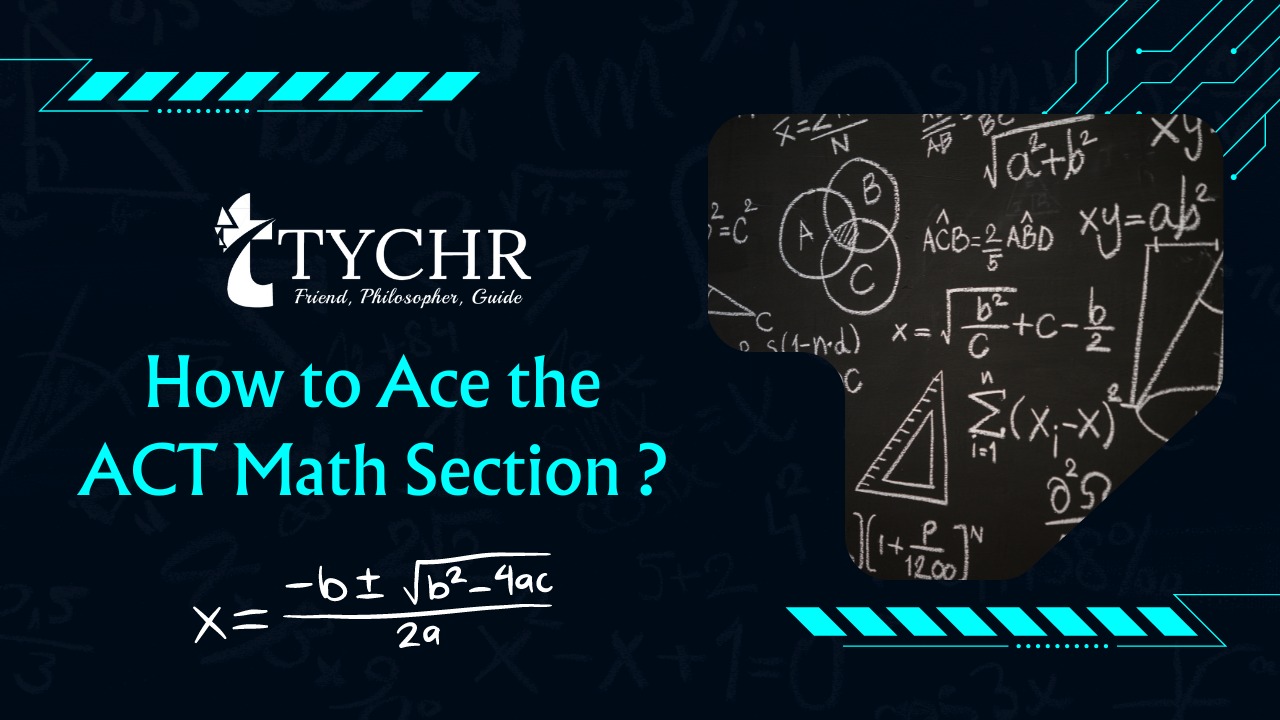Table of Contents
The ACT (American College Testing) is a standardized test widely used for college admissions in the United States. It is designed to assess high school students’ academic readiness for college and is administered by ACT, Inc., a nonprofit organization. The ACT measures students’ knowledge and skills in various subject areas, including English, math, reading, science, and an optional writing section.
The ACT is typically administered multiple times throughout the year at designated testing centers. It’s essential for students to check the official ACT website for the test dates, registration deadlines, and available locations. Many students take the ACT during their junior or senior year of high school, as colleges consider ACT scores as part of their admissions process.
Colleges and universities typically accept both the ACT and the SAT (another standardized test) for admissions purposes, allowing students to choose the test that best represents their abilities. However, post Covid, it is important to stay updated on which universities have stopped accepting the tests. It’s recommended for students to research the specific requirements and preferences of their target colleges regarding standardized tests.
The ACT consists of multiple-choice questions that assess a student’s understanding of the core academic subjects. Let’s take a closer look at each section:
English: The English section tests a student’s skills in grammar, punctuation, sentence structure, usage, and rhetorical skills. It includes passages with underlined portions where students need to identify errors or choose the best alternative to improve the writing.
The English section consists of 75 multiple-choice questions. Each correct answer earns one point, and there is no penalty for incorrect answers. The raw score (number of correct answers) is converted to a scaled score on a range of 1 to 36.
Math: The Math section evaluates a student’s mathematical knowledge and problem-solving abilities. It covers a range of topics, including algebra, geometry, trigonometry, and basic statistics. The questions progress in difficulty from easy to more challenging.
The Math section includes 60 multiple-choice questions that test various math skills and concepts. Again, each correct answer is worth one point, and there is no deduction for incorrect answers. The raw score is converted to a scaled score on a range of 1 to 36.
Reading: The Reading section measures a student’s comprehension and analysis skills. It presents passages from different genres, such as fiction, humanities, social sciences, and natural sciences. Students answer questions to demonstrate their understanding of the passages and draw conclusions based on the provided information.
The Reading section contains 40 multiple-choice questions based on passages from various subjects. Each correct answer earns one point, and there are no point deductions for incorrect answers. The raw score is converted to a scaled score on a range of 1 to 36.
Science: The Science section assesses a student’s ability to interpret and analyze scientific information. It includes graphs, charts, tables, and experiments, requiring students to draw conclusions, make predictions, and analyze data. This section does not test specific scientific knowledge but rather focuses on scientific reasoning skills.
The Science section comprises 40 multiple-choice questions that assess scientific reasoning skills rather than specific scientific knowledge. Similar to the other sections, each correct answer is worth one point, and there is no penalty for incorrect answers. The raw score is then converted to a scaled score on a range of 1 to 36.
Writing (optional): The Writing section, although optional, is recommended by many colleges. It presents a writing prompt where students are expected to develop and present a well-structured essay. This section evaluates the student’s ability to organize thoughts, support ideas with evidence, and showcase effective writing skills.
The optional Writing section, if chosen to be taken, is scored separately. It involves writing an essay based on a provided prompt. Two trained readers independently score the essay from 1 to 6 in four domains: Ideas and Analysis, Development and Support, Organization, and Language Use. The two domain scores for each reader are added together to obtain domain scores ranging from 2 to 12. The four domain scores are then averaged to obtain the Writing section score, ranging from 2 to 12.
Preparing for the ACT typically involves studying the content areas, familiarizing oneself with the test format, and practicing with sample questions and full-length practice tests. There are numerous resources available, including study guides, online materials, and test preparation courses, to assist students in their ACT preparation. Ultimately, the ACT serves as a standardized measure of a student’s academic readiness for college, helping colleges and universities evaluate applicants and make informed admissions decisions.
Prepping for the ACT Math Section
The math section of the ACT can be a daunting challenge for many students. However, with the right approach and targeted preparation, you can confidently tackle this section and maximize your score. In this article, we will provide you with specific and actionable tips to ace the ACT math section. By understanding the content, employing effective strategies, and practicing with relevant examples, you will be well-equipped to excel in this critical component of the ACT. Let’s dive into the details.

Familiarize Yourself with the Content
To excel in the ACT math section, it is crucial to have a solid understanding of the content and concepts that will be tested. The following tips will help you navigate the different topics effectively:
- Know the Fundamentals: Review key mathematical concepts such as algebra, geometry, trigonometry, and basic statistics. Ensure you understand topics like linear equations, quadratic equations, functions, angles, triangles, and probability.
- Memorize Formulas and Rules: Be well-versed in essential formulas and rules to solve problems efficiently. For instance, memorize the Pythagorean theorem, trigonometric ratios, quadratic formula, and rules of exponents.
- Practice Mental Math: Develop mental math skills to quickly perform calculations and estimate answers. This will save valuable time during the test.
Understand the Question Types
The ACT math section consists of different question types. Being familiar with these question formats will help you approach them with confidence. Let’s explore some of the common question types and strategies to tackle them:
1. Algebraic Expressions and Equations: These questions involve simplifying expressions, solving equations, and interpreting algebraic relationships. Example:
Simplify the expression: 2x + 3(2x – 5) – 4(3x + 2)
Strategy: Apply the distributive property and combine like terms to simplify the expression step by step.
2. Geometry and Trigonometry: These questions assess your understanding of geometric properties, angles, lines, triangles, and trigonometric functions. Example:
Find the measure of angle A in a triangle
Strategy: Apply the angle sum property of triangles (180 degrees) to determine the measure of angle A.
3. Data Analysis and Probability: These questions require you to interpret data presented in tables, graphs, and charts, as well as solve probability problems. Example:
What is the probability of selecting a red marble randomly?
Strategy: Divide the number of red marbles by the total number of marbles to calculate the probability.
Utilize Effective Problem-Solving Strategies
In addition to understanding the content and question types, employing specific problem-solving strategies can greatly enhance your performance in the ACT math section. Here are some proven strategies to help you approach the problems systematically:
- Read the Questions Carefully: Take the time to read each question carefully, paying attention to details and key information. Underline or highlight important data or quantities to avoid confusion.
- Work Backwards: In some cases, working backwards can be a useful strategy. Start with the answer choices and substitute them back into the problem to see which one satisfies the given conditions.
- Plug In Values: For algebraic or equation-based questions, plug in sample values that satisfy the given conditions. This can help you understand the problem better and eliminate incorrect answer choices.
- Draw Diagrams: Visualize the problem by drawing diagrams or graphs, especially for
geometry questions. This will enable you to visualize relationships and solve problems more effectively.
1. Use Answer Choices Strategically: When you are unsure of the correct approach, use the answer choices to your advantage. Plug in the answer choices and see which one yields the desired result.
Practice with Targeted Examples
Practice is key to mastering the ACT math section. Ensure that your preparation includes targeted practice with relevant examples that mirror the actual test. Here’s how you can structure your practice sessions:
- Start with Diagnostic Tests: Begin your preparation by taking a diagnostic ACT math test to assess your strengths and weaknesses. This will help you focus your efforts on areas that require improvement.
- Use Official ACT Practice Tests: Access official ACT practice tests, which are available online. These tests closely simulate the actual exam and provide you with a realistic testing experience.
- Seek Quality Resources: Utilize high-quality ACT math prep books, online resources, and video tutorials that offer in-depth explanations and a variety of practice questions. Look for resources specifically designed for the ACT math section.
- Track Your Progress: Keep a record of your performance and identify recurring mistakes or areas where you struggle. This will enable you to tailor your study plan and allocate more time to challenging topics.
By implementing the strategies outlined in this article and dedicating focused practice to the ACT math section, you will build confidence and improve your performance. Remember to develop a solid understanding of the content, familiarize yourself with question types, and employ effective problem-solving strategies. Additionally, practice with targeted examples and track your progress to gauge improvement over time. With perseverance and a well-rounded approach, you can ace the ACT math section and achieve your desired score, opening doors to various college and scholarship opportunities. Best of luck on your ACT journey!







